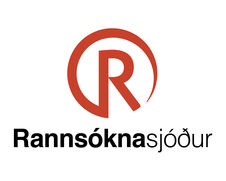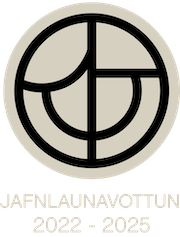Textageymd Njáls sögu með hliðsjón af Skafinskinnu - verkefni lokið
Fréttatilkynning verkefnisstjóra
Megináhersla verkefnisins var á að varpa ljósi á lítt þekkt handrit Njáls sögu, GKS 2868 4to, Skafinskinnu, sem varðveitt er á Konunglega bókasafninu í Kaupmannahöfn.
Þrátt fyrir að flestir útgefenda Njáls sögu hafi nýtt texta Skafinskinnu að einhverju leyti, í bland við texta annarra handrita sögunnar, hefur gripurinn sjálfur, 45 dökk og velkt blöð, hlotið litla athygli. Án þess að hafa farið ýtarlega í forsendur sínar hafa útgefendur og fræðimenn álitið Skafinskinnu verið ritaða um 1400 og í fyrsta lagi á síðari helmingi fjórtándu aldar, og þar með álitið handritið vera á meðal yngri miðaldahandrita Njáls sögu. Mín rannsókn hefur aftur á móti leitt í ljós að Skafinskinna getur tæpast verið yngri en frá því um miðja fjórtándu öld. Annar meginþáttur í rannsókn minni er Z-flokkurinn svokallaði, en texta þessa flokks er aðeins að finna í tveimur handritum, Skafinskinnu og GKS 2870 4to (Gráskinnu). Með því að taka saman það sem ólíkt er í þessari gerð textans samanborið við hinar gerðirnar, t.d. í því hvernig ónefndur ritstjóri hefur breytt textanum á kerfisbundinn hátt með því að skipta út sumum orðum fyrir önnur sömu merkingar, fæst betri skilningur á því hvernig miðaldatexti
var endurskapaður.
English:
The main focus of the project was to shed light on a single medieval codex containing Njáls saga, the manuscript GKS 2868 4to, also known by the nickname Skafinskinna, which is held at Royal Library in Copenhagen, Denmark. Although previous editors of Njáls saga have utilized the text of Skafinskinna in their editions, along with the other old vellum manuscripts that contain the saga, the codex itself has received little attention. Without much discussion, editors and critics have dated the codex to around 1400 or the second half of the fourteenth century at the earliest, placing Skafinskinna among the younger of the Njáls saga codices. My research has, however, shown that Skafinskinna is hardly written later than ca. 1350, and that it should be counted among the oldest manuscripts of the saga. Another focal point of my research is the text of the so-called Z-class of Njáls saga manuscripts, which is only found in two manuscripts, Skafinskinna and GKS 2870 4to (Gráskinna). By showcasing how a medieval editor of Njáls saga has systematically altered the text in a number of rather minuscule ways, for example replacing certain words with other synonymous words, a better understanding of medieval editorial practices is gained.
∙ Information on how the results will be applied
My study and transcription of Skafinskinna will aid in any future edition of Njáls saga. My publicly
available transcription of Skafinskinna will be of use not only for further study of Njáls saga, but also for the study of the evolution of the Icelandic language and the study of Icelandic scribal culture in the Middle Ages. The multispectral imaging technology used on a part of the manuscript has generated very positive results, showing that it is not something to be overlooked, and these results will hopefully inspire future scholars to make full use of such methods. The methodological discussion on the stemmatics of Njáls saga included in my thesis shows that a complete overhaul of editorial practices involving Old Norse-Icelandic texts is needed. As my stemmatological observations are for the most part focused on Skafinskinna and its most related siblings, there is still need to apply my findings to a greater extent to the whole manuscript tradition of Njáls saga.
∙ A list of the project’s outputs
The main output of the project will be the doctoral thesis itself, which is in its final stages. However, after the completion, acceptance and defence of the thesis, certain chapters from it will be modified and turned into separate articles to be published in various journals. A complete transcription of the manuscript GKS 2868 4to will be made accessible on the Medieval Nordic Text Archive (Menota) and possibly also on Editiones Arnamagnæanæ Electronicæ, hosted by the University of Copenhagen (which is still under development).
Heiti verkefnis: Textageymd
Njáls sögu með hliðsjón af Skafinskinnu / The Texual Tradition of Njáls saga:
The Case of Skafinskinna
Verkefnisstjóri: Bjarni Gunnar Ásgeirsson, Háskóla Íslands
Tegund styrks: Doktorsnemastyrkur
Styrktímabil: 2019-2021
Fjárhæð styrks kr. 19.995.000
Tilvísunarnúmer Rannís: 195649


